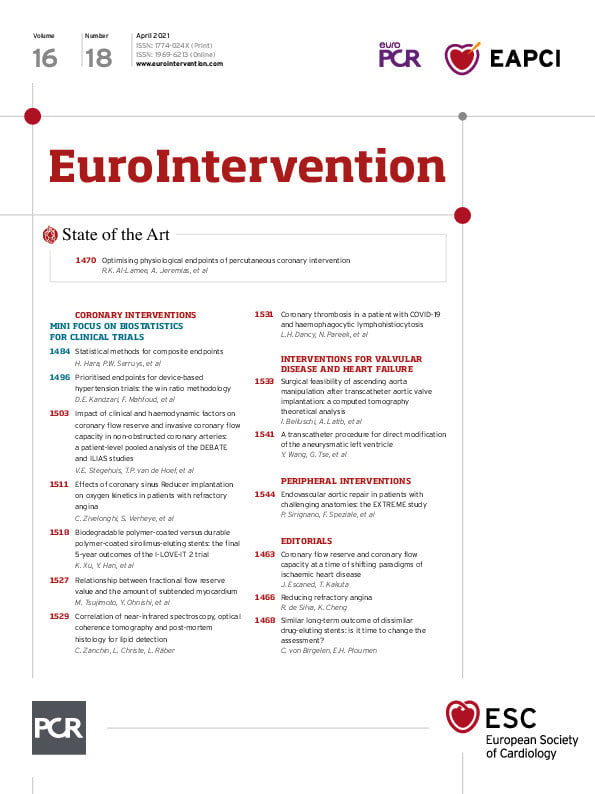Cardiologists increasingly face the challenges of managing patients with refractory angina (RA) in their clinical practice. The prevalence of RA is increasing with few therapies shown to improve symptoms and quality of life in appropriately powered randomised controlled trials1. Patients with RA have significant morbidity and their management incurs significantly increased healthcare costs2. The coronary sinus Reducer™ (CSR; Neovasc Inc., Richmond, BC, Canada), a stainless steel hourglass-shaped device which is inserted transvenously into the coronary sinus, has been shown, in a randomised sham-procedure controlled trial in patients with RA, to improve Canadian Cardiovascular Society (CCS) angina class and exercise testing parameters significantly, with a trend towards improved ischaemic burden by dobutamine stress echocardiography3. This intervention has received a Class IIb (level of evidence B) recommendation for the treatment of RA in recent European Society of Cardiology (ESC) chronic coronary syndrome guidelines4.
The mechanisms by which the CSR improves angina in patients with RA is under ongoing investigation; however, experimental studies suggest that it is mediated by redistribution of blood flow towards ischaemic myocardium resulting from increased coronary sinus venous pressure5,6. In this edition of EuroIntervention, Zivelonghi et al report the results of a prospective unblinded observational study investigating the effect of the CSR in RA on effort tolerance and oxygen kinetics by cardiopulmonary exercise testing (CPET)7.
CSR implantation was performed at two centres. The patients underwent CPET at baseline and at six months. The primary endpoints were change in VO2 max and VO2 at the anaerobic threshold (AT). The anti-anginal drug regimen was unchanged throughout the study. Of 94 patients undergoing CSR implantation during the study period, only 37 (39%) were included in the current study, due to inability to perform CPET, pacemaker implantation and unavailability for follow-up. This selected study population had CCS class III-IV angina (97.3%) and a high rate of previous revascularisation (73.7% with previous coronary artery bypass grafting [CABG]). All patients underwent successful uncomplicated CSR implantation. At six-month follow-up, significant improvements were observed in VO2 max (+0.97 ml/kg/min [+11.3%]; p=0.026) and workload (+12.9 W [+34%]; p=0.05). However, non-significant differences in VO2 at the AT (p=0.06) were observed. The changes in VO2 max were associated with significant improvements in CCS class (3.2±0.5 to 1.6±0.8; p<0.01) and Seattle Angina Questionnaire assessment (all domains, p<0.01). The authors argue that changes in CPET parameters provide objective evidence for reduction of myocardial ischaemia resulting from CSR implantation.
While of interest, the results of this study need interpretation in the context of the study’s limitations. This is a small open-label study in a selected patient population. The absence of a sham-procedure arm and blinded independent endpoint assessment probably influenced the observed results, as highlighted by recent studies8. Furthermore, the exercise test data indicate that tests were stopped due to development of angina in only 36% of patients. Exercise duration (pre-CSR: 316 s; post-CSR: 343 s; p=0.36) did not significantly improve in contrast to other recent studies, in particular the international multicentre REDUCER-I registry of 228 patients, which showed significant improvement (pre-CSR: 360 s; post-CSR: 383 s; p=0.025)9. Of note, VO2 max at the AT did not improve significantly. The authors show data for four patients in whom angina did not improve after CSR implantation, yet in whom CPET parameters did improve. The inconsistency of the results is probably a reflection of the study design, principally the limited sample size, lack of a sham-control arm and unblinded endpoint assessment.
This study does not provide direct evidence for CSR-induced redistribution of blood flow into ischaemic myocardium. Preliminary reports have suggested improvements in stress myocardial perfusion reserve index and reduction in the number of ischaemic segments by cardiovascular magnetic resonance after CSR implantation10. Evaluation by CPET can provide physiologic metrics of the work rate, heart rate and O2 uptake at which myocardial ischaemia develops, and correlates with the burden of coronary artery disease. As this modality is both quantitative and reproducible, it would seem an appropriate choice to evaluate changes in cardiopulmonary performance that may occur as a consequence of CSR implantation, especially if combined with assessments of regional myocardial perfusion and ventricular function.
CSR implantation is a very promising new approach to address the unmet clinical needs of patients with RA. Zivelonghi et al should be congratulated for undertaking a mechanistic study to investigate how CSR implantation alters the pathophysiology of impaired cardiopulmonary performance in patients with RA. Such studies are needed and of interest. However, it is difficult to draw strong conclusions from the data presented, which do not directly demonstrate reduced myocardial ischaemic burden as a result of CSR implantation. Future adequately powered prospective studies which include a sham-control arm, and blinded assessment of endpoints which evaluate both regional myocardial perfusion and cardiopulmonary performance will be needed for robust evaluation of the mechanistic basis of this promising new treatment.
Conflict of interest statement
The authors have no conflicts of interest to declare.
Supplementary data
To read the full content of this article, please download the PDF.

